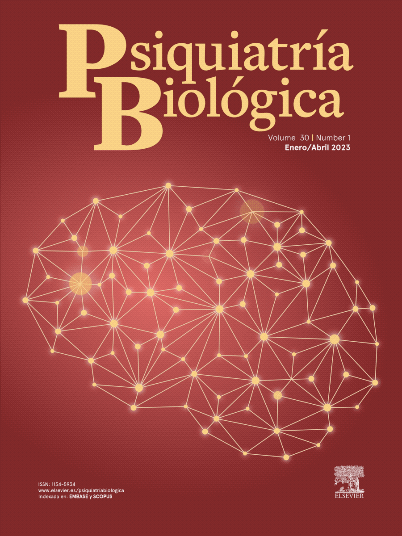Objetivo: Determinar la existencia de posibles diferencias en los potenciales evocados cognitivos (PPEE) entre pacientes obsesivos, melancólicos y controles. Investigar la influencia de la sintomatología depresiva comórbida sobre los PPEE en los pacientes con trastorno obsesivo-compulsivo (TOC).
Métodos: Se estudian las latencias N100, N200, P300, N400 y la amplitud P300, utilizando un oddball-paradigm auditivo, en 47 obsesivos, 80 depresivos melancólicos y 88 controles.
Resultados: La amplitud media de la P300 fue significativamente menor entre los melancólicos (X = 9,6, DE = 4,2) respecto los obsesivos (X = 14,3, DE = 6,3) y controles (X = 17,3, DE = 4,8), manteniéndose las diferencias al controlar la edad como covariante. Al controlar la edad, los melancólicos presentaron una mayor latencia de las ondas N100, N200 y P300 respecto a obsesivos y controles. Los pacientes con TOC presentaron valores intermedios, obteniendo significaciones sólo para una mayor latencia N100 y una menor amplitud P300 respecto a los controles. Entre los obsesivos, los que presentaron puntuaciones más patológicas (y más cercanas a los melancólicos) fueron los que tenían puntuaciones más altas en el test de Hamilton de depresión, siendo este hecho independiente de la edad y del subtipo de TOC. En cambio, entre los melancólicos, la gravedad de la depresión no se relacionaba con el grado de alteración en los PPEE.
Conclusiones: Este estudio apoyaría la hipótesis de que las alteraciones en los PPEE en pacientes con TOC son secundarias al nivel de depresión comórbido y no a la sintomatología obsesiva primaria. Sin embargo, estas alteraciones parecen ser cualitativamente diferentes entre pacientes obsesivos respecto a los melancólicos.
Objective: To investigate whether there are differences in event-related potentials (ERP) among patients with obsessive-compulsive disorder (OCD), major depressive disorder with melancholia and healthy controls. To study the influence of comorbid depressive symptoms on ERP values in patients with OCD.
Methods: N100, N200, P300 and N400 latencies and P300 amplitude were assessed in 47 patients with OCD, in 80 melancholics and in 88 controls. An oddball-paradigm in the auditory modality was used.
Results: Mean P300 amplitude was significantly lower in melancholic patients (X = 9.6; SD = 4.2) than in those with OCD (X = 14.3; SD = 6.3) and in controls (X = 17.3; SD = 4.8). This result was independent of age. N100, N200 and P300 latencies were higher in melancholics than in those with OCD and in controls. Patients with OCD showed intermediate values, reaching statistical significance only in N100 latency and P300 amplitude compared with controls. Among patients with OCD, those with more abnormal ERPs (and closer to those of melancholics) also showed greater impairment according to the Hamilton Depression Rating Scale, and this was independent of age and OCD subtype. However, severity of depression did not correlate with ERP abnormalities in melancholics.
Conclusions: This study supports the hypothesis that alterations in ERP in patients with OCD depend more on comorbid depressive symptoms than on obsessive-compulsive severity. However, there seems to be a qualitative difference in these alterations in patients with OCD and in melancholics.




